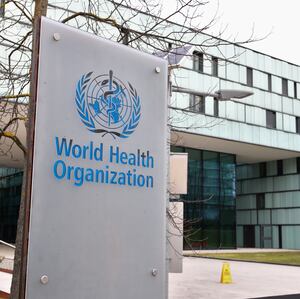Over 1,000 children in the U.S., U.K., and other countries have contracted an unusual form of hepatitis since the spring, and there’s still no clear cause. According to the World Health Organization, the outbreak has resulted in dozens of liver transplants and at least 22 deaths. Scientists are scrambling to find answers as to what’s causing this new spate in cases—yet many basic aspects of the outbreak remain a mystery.
For one, scientists aren’t even sure if it’s an outbreak or not, since it’s unclear what normal rates of unexplained hepatitis in children are. In the U.S., where a cluster of hepatitis cases in Alabama was reported in May, a virus called adenovirus type 41 was detected in five patients’ blood samples. Jacqueline Tate, an epidemiologist at the Centers for Disease Control and Prevention’s Division of Viral Diseases, told The Daily Beast that clinicians do not routinely test for adenovirus in hepatitis cases, prompting the CDC to issue a recommendation that they start doing so for the sake of the ongoing investigation.
“The hypothesis that we are looking into is: ‘Is it associated with adenovirus?’” Tate said. Adenovirus 41 is known to cause hepatitis in immunocompromised children, but the children who have contracted severe liver infections were otherwise healthy. Tate added that the mechanism by which adenovirus infection might be related to these cases and other co-infections is unknown.
ADVERTISEMENT
Other evidence is piling up that a second virus, called adeno-associated virus 2 (AAV2), may play a role in these infections. AAV2 on its own cannot cause hepatitis, but with an assist from a virus-like adenovirus, it can infect human cells and cause damage to the body. Two recent preprint studies from the U.K. that have not been peer-reviewed yet found associations between hepatitis cases and AAV2. In one of the new studies, researchers also detected activators for AAV2 in the form of adenovirus and another helper virus for the majority of children with severe, unexplained hepatitis that they studied.
Still, based on evidence from children’s infected livers that required transplantation, the study’s authors suspect liver malfunction in these patients was not directly caused by infection from either AAV2 or an associated helper virus.
“The hepatitis in children investigation is one of the most complex I’ve been involved in,” Catherine Moore, a consultant clinical scientist with the public health service for Wales, wrote on Twitter. She added that she believes adenovirus is the culprit, but that an out-of-control immune response may contribute to the severe infection, too.
Ongoing investigations have also looked at COVID infections and lockdowns as a contributing factor for the new hepatitis outbreak. An article in The Lancet Gastroenterology & Hepatology published this month lays out the case for “superantigen-mediated immune activation,” which posits the coronavirus’ spike protein could trigger a broad overreaction by the body’s immune system that may explain why severe bouts of hepatitis have been associated with a few normally mild viruses.
One of the new preprints also proposes that lockdown measures and physical distancing may have created populations of children with increased susceptibility to AAV2, adenovirus, or another helper. The theory goes that these children would have normally been exposed to the viruses gradually over the course of the past several years. But because of lockdowns and distancing measures, they are now being infected all at once and getting hit with especially severe infections. Still, this hypothesis has yet to be supported by any hard evidence from patients.
Sumit Rawat, a microbiologist at Bundelkhand Medical College in India, co-authored a preprint that looked at associations between COVID-19 infection and hepatitis cases in central India that sprang up between spring and summer of 2021. Rawat told The Daily Beast that these cases were less severe than the ones reported across Europe and the U.S. this year, and that it could be interesting to see how history of infection with particular COVID variants may or may not be associated with severity of these hepatitis cases.
According to Tate, the CDC’s investigation team is looking into the data on COVID infection. So far, infection rates do not seem to differ between hepatitis cases and healthy individuals.
As of early July, it appeared as if new reports of cases worldwide were decreasing, and that new infections mainly affected Europe. Officials quickly cautioned against overinterpreting any statistics, though. Case numbers may depend not on infection trends but instead on the recent creation of surveillance networks to scan for hepatitis cases in the latest mystery outbreak.
“During this investigation, as reports come in from states, it may seem like there is a growing number of children with hepatitis, but this might not be the full picture,” the CDC’s website on the investigation reads. “These may not be new cases of hepatitis, and they may not be linked to this current investigation.”
The investigation team, said Tate, will continue to put out updates as the data become available, which could take several months. She recommended that parents watch their children for symptoms of liver inflammation—which include jaundice, fever, and loss of appetite—and promote frequent hand-washing. Adenovirus is best killed with soap and water—not by alcohol-based hand sanitizers.
“From what we've seen so far, this appears to be rare,” Tate said. “That being said, it is serious. If your child gets hepatitis, it can be quite scary.”







